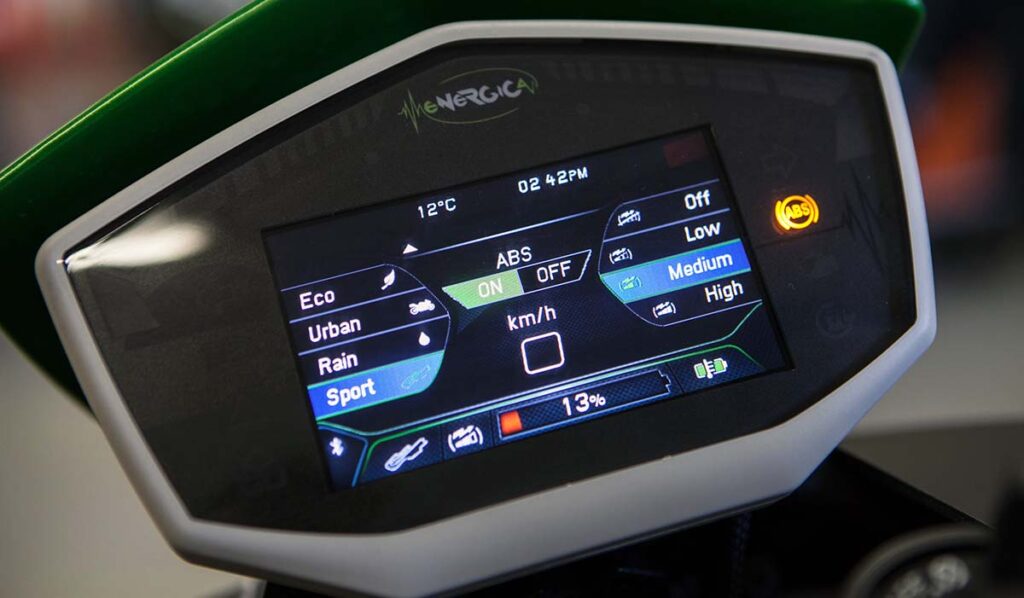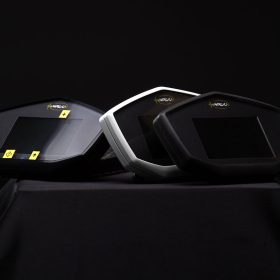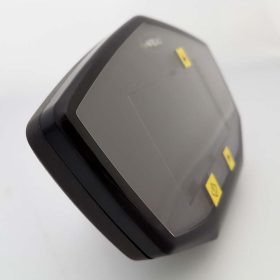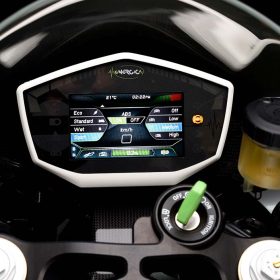The origin of the 3D printed dashboard
Right from the very start, the Energica team endorsed the idea of creating an innovative dashboard capable of containing, protecting, and isolating cutting-edge and very complex electronics: the studies and tests conducted by Energica, along with the specialized and trustworthy supplier Cobo, led to the creation a 4.3″ dashboard made up of a display with 16.7 million active matrix colours that provides excellent visibility.
The active matrix dashboard creates a real Human Machine Interface for the motorcycles.
This technology allows great flexibility, supporting the flow of information and interactivity with the vehicle system. It can provide an extensive menu of configurations and advanced user diagnostics, which are easy to read.
The Energica team worked with the injection mould supplier to develop the dashboard. Both took advantage of the support and expertise of CRP Technology and Windform composite materials, that supplied three 3D printed dashboard prototypes, functional and ready to be tested.
Creation of the dashboard prototypes
These functional prototypes have been manufactured using Selective Laser Sintering technology and Windform LX 3.0, a polyamide-based composite material reinforced with glass-fibres.
On all three prototypes the development and validation activities of the components (hardware and software) and the verification of the design solutions were carried out applying specific test plans aimed at verifying both the full correspondence to the functional needs and compliance with the quality and reliability objectives required.
The decision to opt for the creation of prototypes, that would allow a thorough study to reduce the margins of error on the injection mould, is the result of a process undertaken by CRP Technology together with the Energica Motor Company team engineers.
First 3D printed dashboard prototype
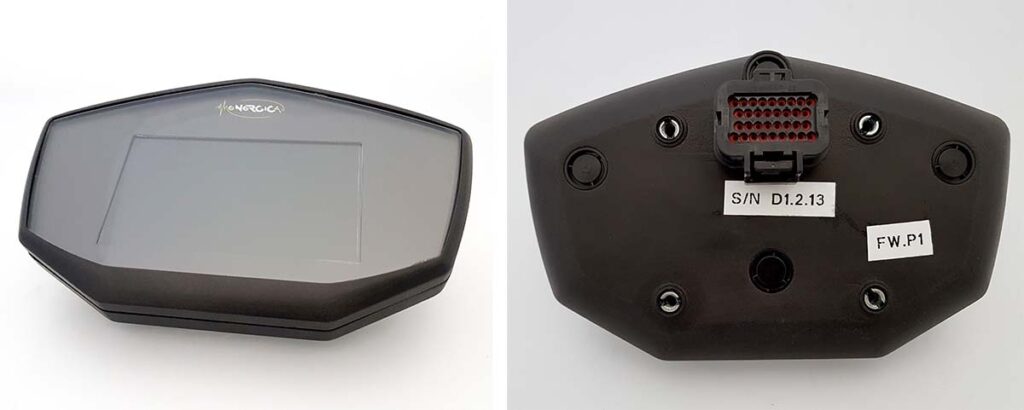
The shell was made in two separate parts. “Our suppliers of traditional technology (mould makers) – they stated at Energica Motor Company – would have taken roughly five months to prepare the prototype moulds. Thanks to CRP Technology and the Windform composite materials, we received the prototype in two days.”
The next phase involved assembling electronic components and securing them with mastic/glue. No particular difficulties or problems were found during this phase.
The prototype in Windform was then returned to Energica, which tested it by mounting it directly on the bike (in photo you’ll note the holder for the bike) and tested it on the road: the prototype, in conditions of extreme stress, was suitable for protecting sophisticated electronic components thanks to the construction material used. In fact, Windform LX 3.0, is non-conductive material, ideal for producing resistant end use parts and end-applications, which can be subjected to vibrations, impacts, and multiple weather conditions.
Second 3D printed dashboard prototype
The second prototype, thanks to the material’s features, was painted in order to conduct colour tests.
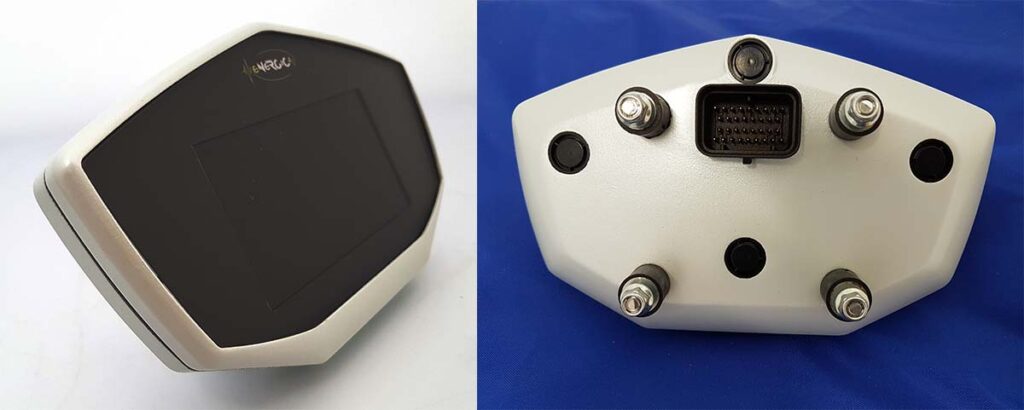
Third 3D printed dashboard prototype
The third prototype is a hybrid version which enabled the Energica staff and mould makers to carry out precise assembly tests: this model features the lower part made by 3D printing using Windform LX 3.0, and the upper part in plastic injection.
The tests gave positive results and the Energica engineers were satisfied: the two parts were assembled without encountering any particular problems. The plastic injection tolerances calculated are the same as those of the Windform composite material used.
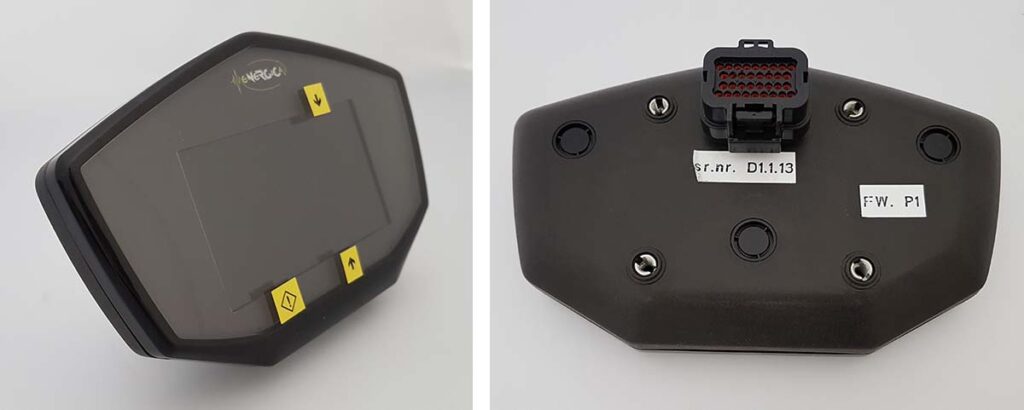
Creation of the finished product using traditional technology (injection moulding)
Once the project by the Energica team was approved, the mould makers developed the mould for industrial production.
The professional 3D printing technology and Windform composite materials enabled the Energica team to shorten product development times, and to continue testing the component/prototype directly on the motorbike.
“We used the functional prototypes of the dashboard for roughly six months, subjecting them to every kind of stress during the test rides.
Thanks to the prototypes in 3D printing and Windform, we have been able to work with the mould makers in a new way. These functional components, which are much more than just aesthetic prototypes, allowed us to examine the application, and annotate some improvements for the final mould. We therefore saved time and money: when we gave the authorization to proceed with injection moulding, we knew that the pieces would come out perfect and ready to be used.”
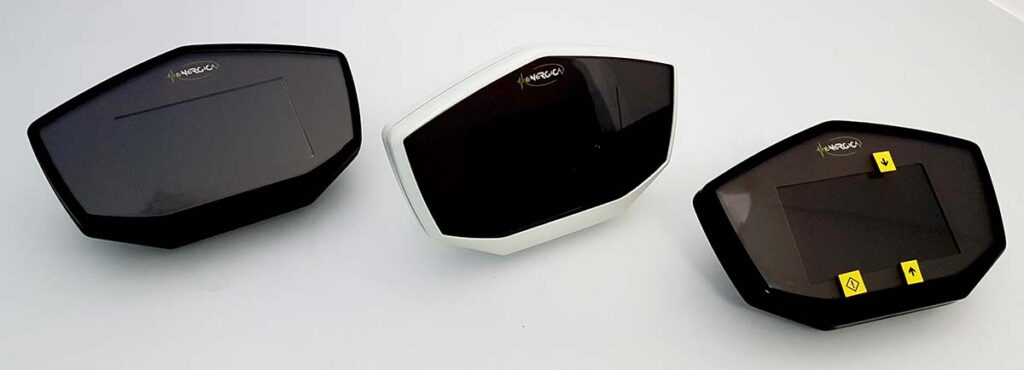
Conclusion
The use of Powder Bed Fusion with Polymers (Selective Laser Sintering) and Windform SLS composite materials enabled Energica Ego, the first high-performance full electric motorcycle, to be on the market quickly, accelerating the prototyping and product development phase.
The Energica project stems from the entrepreneurial vision of the Cevolini family, owners of the CRP companies, after the CRP Racing experience in parallel with eCRP back in 2009.
CRP companies were fundamental for the industrial development of Energica since the very first prototypes, which contain parts made with Selective Laser Sintering technology and Windform carbon or glass fibre filled composite materials. The materials were engineered by the RD department of CRP Technology, from 1996 supplier of advanced 3D printing solutions.
Energica has also benefited from the experience gained by the CRP Meccanica, supplier for over 50 years of innovative and cutting-edge solutions with high precision CNC machining alongside the major F1, Moto GP, Rally Raid and ALMS teams.
CRP Meccanica and CRP Technology have always provided these teams with a high level of support during the entire development phases of the projects, from the early stages of design and development to the construction process, with consequent recognition of an innovative approach in the use of new materials and technologies. The core business was then extended to all the most advanced industry sectors.
